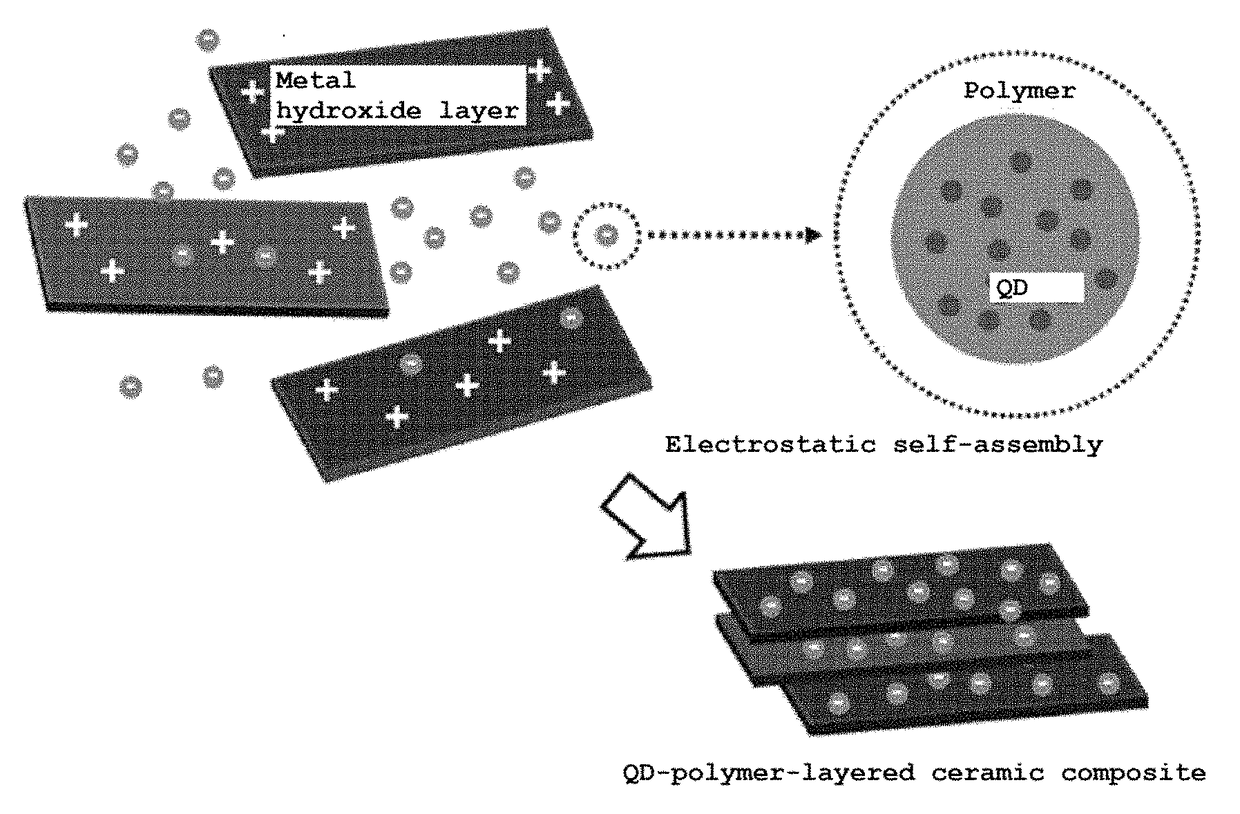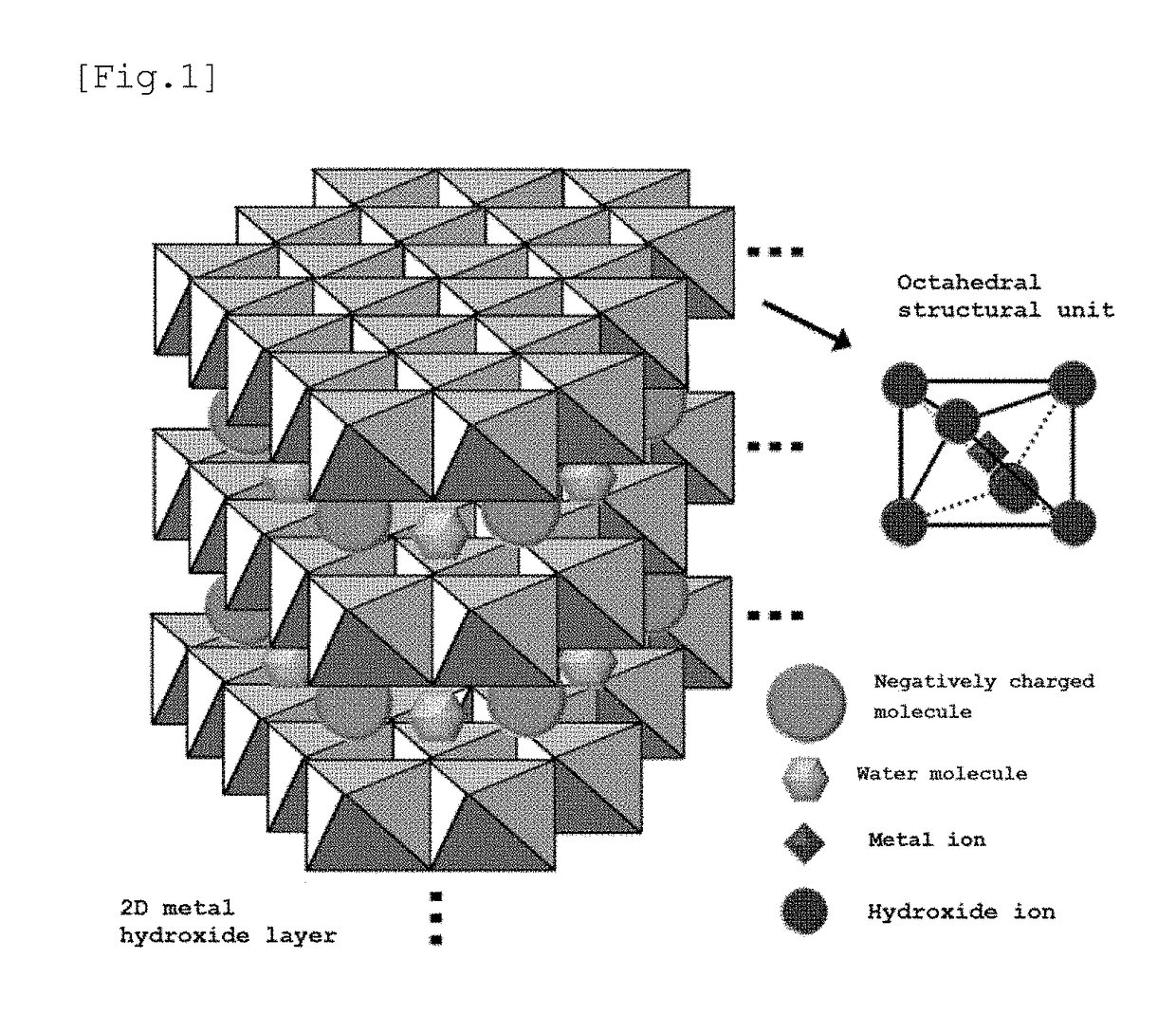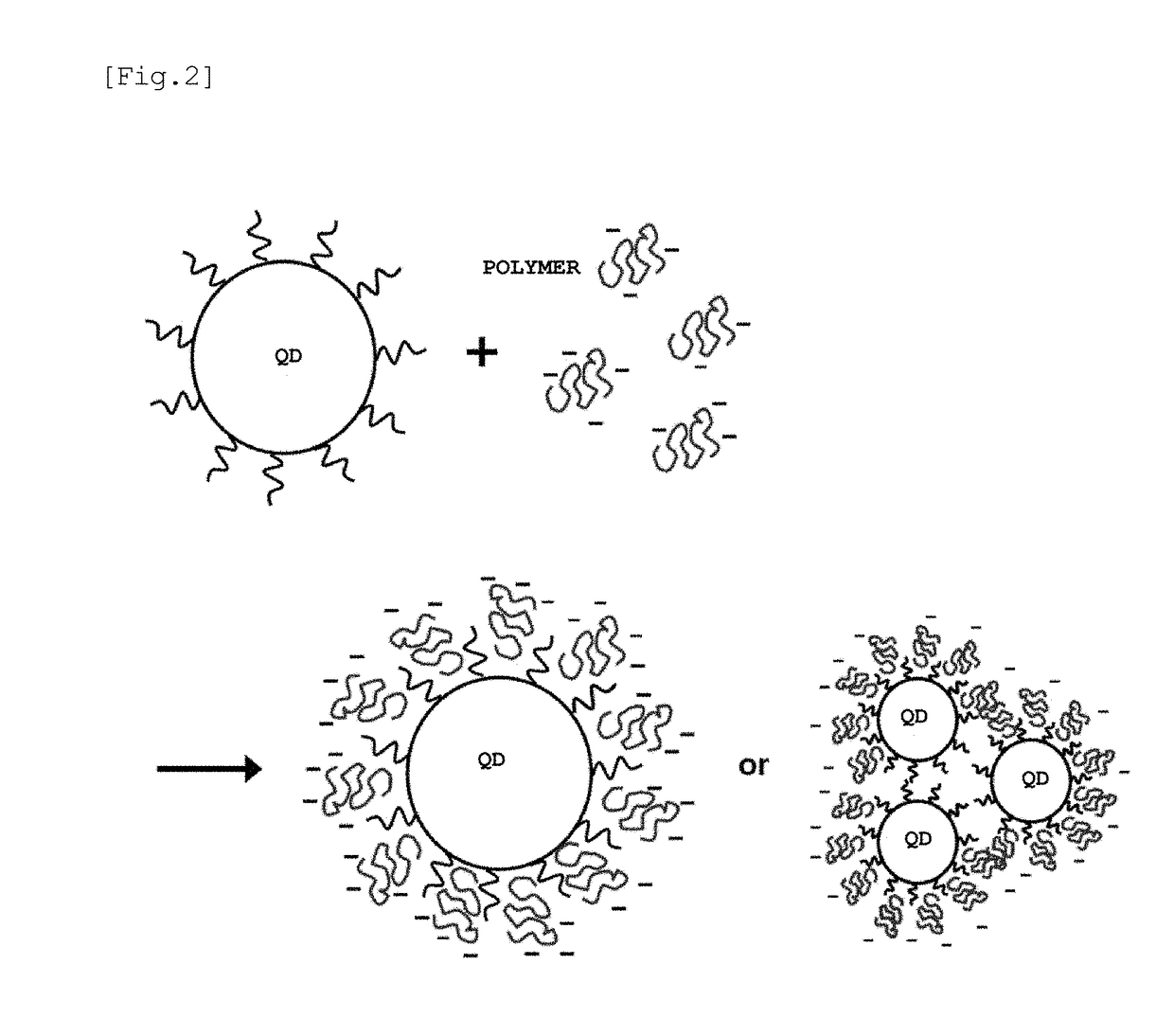Synthesis of quantum dot/polymer/layered-structure ceramic composite
a technology of polymer and ceramics, applied in the field of quantum dots polymerlayered ceramic composites, can solve the problems of easy deterioration of activity of quantum dots, difficult control of color of exterior materials, and difficulty in controlling quantum dots, so as to improve chemical and thermal stability and optical stability of composites, reduce penetration of exterior materials, and increase the spatial confinement of quantum dots in composites.
- Summary
- Abstract
- Description
- Claims
- Application Information
AI Technical Summary
Benefits of technology
Problems solved by technology
Method used
Image
Examples
example 2
Synthesis and Exfoliation of Layered Ceramic (e.g. Layered Double Hydroxide)
[0049]At room temperature, 0.01 M zinc nitrate and 0.003 M aluminum nitrate aqueous solutions were added with 0.35 M ammonia with stirring. While the resulting mixture was stirred for 24 hr, the reaction temperature was maintained at room temperature. After completion of the reaction, the layered double hydroxide composite was precipitated using a centrifuge, and the supernatant was then discarded, followed by drying in air. 0.2 g of a layered double hydroxide powder containing CO32− as a negatively charged material was added to a 1 M NaCl-HCl solution, and then stirred for 12 hr in a nitrogen atmosphere. The layered double hydroxide composite was precipitated using a centrifuge, and the supernatant was then discarded, followed by drying in air. Through the NaCl-HCl reaction, CO32− was substituted with Cl−. As is apparent from the results of X-ray diffraction analysis of FIGS. 7, (003) and (006) peaks of the...
example 3
Synthesis of Quantum Dot-Polymer-Layered Ceramic Composite
[0052]The formamide solution containing the exfoliated layered double hydroxide was separated into the formamide supernatant and the layered double hydroxide precipitate using a centrifuge. The supernatant was discarded, and the precipitate was added with an aqueous solution containing the quantum dot-polymer structure and then stirred at room temperature for 1 hr. As illustrated in FIG. 9, the composite having fluorescence is formed and the intensity of fluorescence is equal to or greater than the intensity before formation of the composite, and the position or shape of the peak can be seen to be maintained.
[0053]Upon centrifugation at 2000 rpm for 3 min using a centrifuge, as illustrated in FIG. 10, while the composite is formed, the quantum dot-polymer structure is trapped in the layered ceramic and thus precipitated. The quantum dot-polymer structure centrifuged under the same conditions is well dispersed in the aqueous s...
example 4
Formation of Film Via Drop Casting and Fluorescence Properties
[0054]The quantum dot-polymer-layered ceramic composite solution was dropped on a glass substrate and the solvent was evaporated at room temperature, thus forming a composite film. As illustrated in FIG. 11, the quantum dot-polymer-layered ceramic composite film is relatively uniform compared to the quantum dot-polymer structure film under the condition that the quantum dots have the same concentration. Although such a composite film contains the quantum dots in the same concentration, it exhibits relatively strong fluorescence properties (FIG. 12).
PUM
| Property | Measurement | Unit |
|---|---|---|
| temperature | aaaaa | aaaaa |
| temperature | aaaaa | aaaaa |
| hydrophobic | aaaaa | aaaaa |
Abstract
Description
Claims
Application Information
 Login to View More
Login to View More - R&D
- Intellectual Property
- Life Sciences
- Materials
- Tech Scout
- Unparalleled Data Quality
- Higher Quality Content
- 60% Fewer Hallucinations
Browse by: Latest US Patents, China's latest patents, Technical Efficacy Thesaurus, Application Domain, Technology Topic, Popular Technical Reports.
© 2025 PatSnap. All rights reserved.Legal|Privacy policy|Modern Slavery Act Transparency Statement|Sitemap|About US| Contact US: help@patsnap.com



